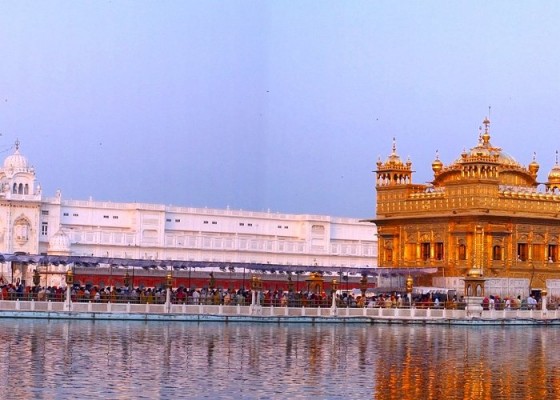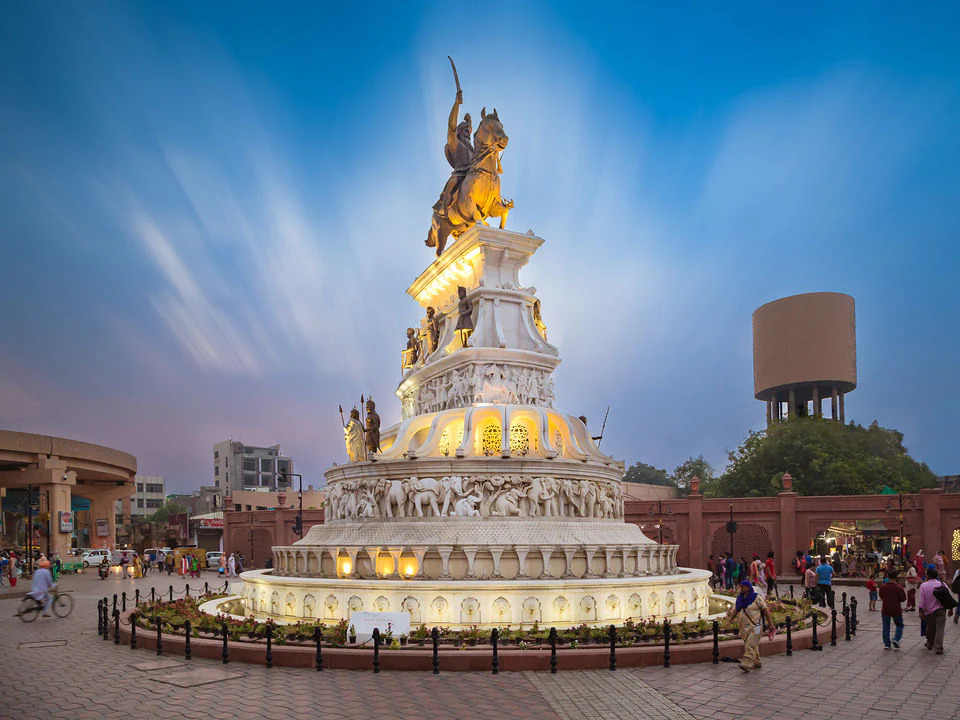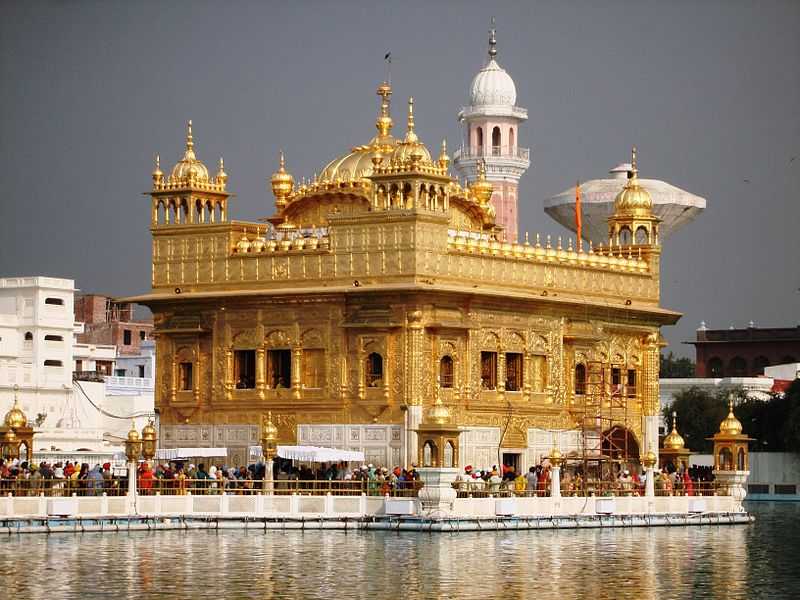


Amritsar, a city located in the state of Punjab in India, is known for its rich cultural heritage and religious significance. The city was founded by Sri Guru Ramdass Ji, the fourth guru of the Sikhs in about 1574 A.D. It is home to the famous Golden Temple(spiritual center for the Sikh), one of the most important pilgrimage sites for Sikhs, and is also known for its historic landmarks and bustling street food scene. In this blog, I will take you through a small trip to Amritsar, where I had the opportunity to explore this fascinating city and experience its unique blend of history, religion, and culture.
A saga of pride and pain, every bit of the city demonstrates the stories of patriotism, deep rooted culture, the ‘pleasure to ears’ Punjabi language local conversation and street side food and stalls. 
I arrived in Amritsar early in the morning by air and headed straight to the Golden Temple, also known as Sri Harmandir Sahib. Seeking blessings in the golden hour is no less than a magical moment. The temple is a stunning piece of architecture, with its intricate carvings and golden domes shining in the sunlight. The temple receives more than 1,00,000 visitors on the week days itself. I was amazed by the sheer size of the temple complex, which covers several acres and is surrounded by a large pond, known as the Amrit Sarovar.
I spent several hours at the temple, taking in the peaceful atmosphere and observing the thousands of pilgrims who come from all over the world to pay their respects. I was struck by the devotion and reverence of the visitors, many of whom had made long journeys to be here. The stay and food is free(Langar) and a part of free service provided by the mandli there, how exactly the world knows about humanity services by the Sikh community all around the world.
One can be a part of community kitchen and help the chefs there. Willing to volunteer, this will add to your portfolio of different experience all together. People from all over the country visit the temple, bow down to the Guru, receive prasad in the form of langar and serve by volunteering within the temple either by collecting the shoes, cleaning the premises, serving in the community hall or small supporting services to the veer ji’s and the community.
In the evening, I headed to the famous Jallianwala Bagh, a public garden that was the site of a massacre of peaceful protesters by British troops in 1919. A dark day in the history of India, this incident took hundreds of lives and left a dreaded silent to the one witnessed and are still alive. The garden is now a memorial to the victims of the tragedy and serves as a powerful reminder of India’s struggle for independence.
The second day of my trip was dedicated to exploring the historic city of Amritsar. I started by visiting the Akal Takht, the highest temporal authority of the Sikhs, and the nearby Guru ka Bagh, a beautiful park that is a popular spot for picnics and relaxation.
I then headed to the Durgiana Temple; a Hindu temple dedicated to the goddess Durga. The temple is known for its beautiful architecture and intricate carvings, and is a popular destination for Hindu pilgrims.
In the evening, I explored the bustling street food scene of Amritsar, trying local specialties such as Amritsari kulcha, a type of bread filled with spiced vegetables, and lassi, a traditional yogurt-based drink. I was impressed by the variety and quality of the food, and the lively atmosphere of the street vendors. Since I am fond of traditional wear, I couldn’t resist myself from tapping my feet into local market and buy Amritsari Jutti and Phulkari dupatta for me and my mother. One can buy the same from heritage market, Guru bazaar. 
On my final day in Amritsar, I visited the Wagah Border, the main crossing point between India and Pakistan. The border is famous for the elaborate flag-lowering ceremony that takes place each evening, which is attended by thousands of visitors. The ceremony is a symbol of the rivalry between the two countries, but also a reminder of the shared cultural heritage of the region.
This Indo-Pakistan border is between Lahore and Amritsar. It is around 28kms from the city centre. The onset of Beating Retreat border ceremony before the sunset is A portrayal of humongous energy and strength. It begins with the parade by the soldiers of both the countries in a well-coordinated manner and ends by playing the national anthem and lowering the flags down at the sunset. The entry to this ceremony is free.
In the afternoon, I headed to the Ram Bagh, a beautiful park that was once the summer palace of Maharaja Ranjit Singh. The park is now a popular spot for picnics and relaxation, and is known for its beautiful gardens and historic monuments.
My evenings were filled with the hustle bustle of Lahori Gate Market. Bargaining is the key skill to shop for pashmina shawls, pickles, cotton suits and much more. Founded by Guru Har Gobind, it was established as a symbol of political bulwark; the place from which the spiritual and political concerns of the Sikh community were addressed.
My small trip to Amritsar was an unforgettable experience, filled with a rich blend of history, religion, and culture. The city is a fascinating destination, offering something for everyone, from the peaceful atmosphere of the Golden Temple to the bustling street food scene, and from the historic landmarks to the lively events at the Wagah Border. Just stop by, in between the city to breathe amidst the agriculture land growing Mustard and many other crops like radish, wheat etc get a nice picture (if you being a Bollywood fan). Whether you are a history buff, a spiritual seeker, or just looking for a unique travel experience, Amritsar is definitely a city worth visiting.